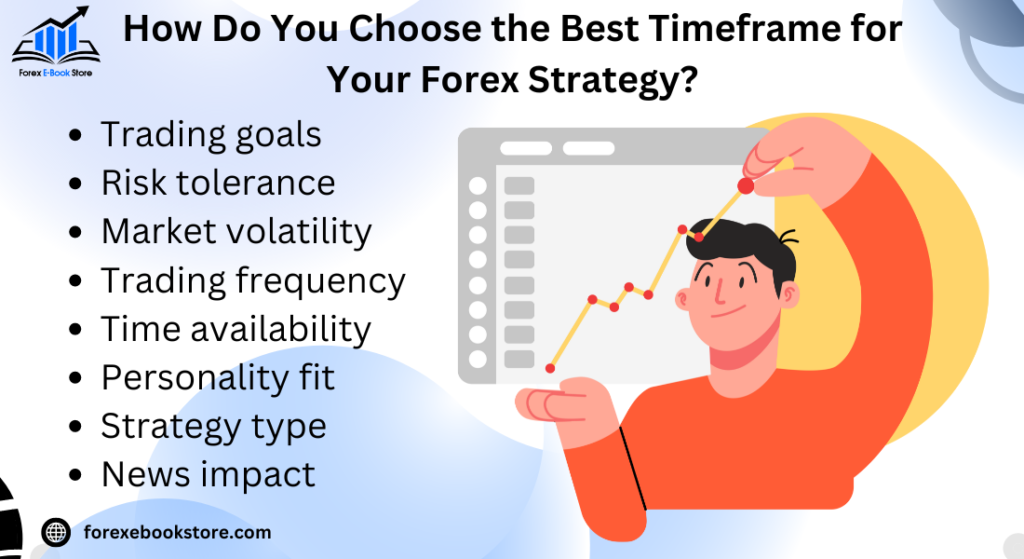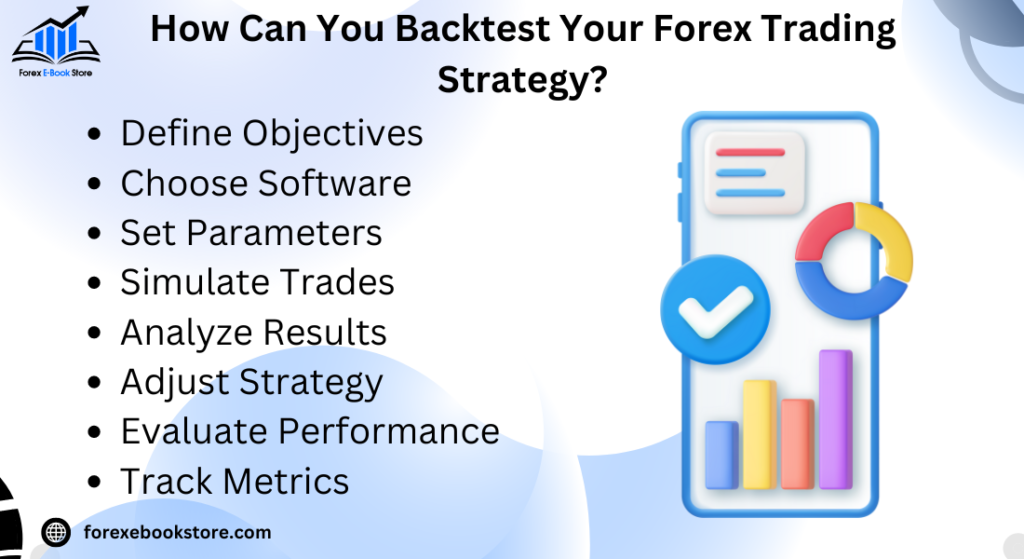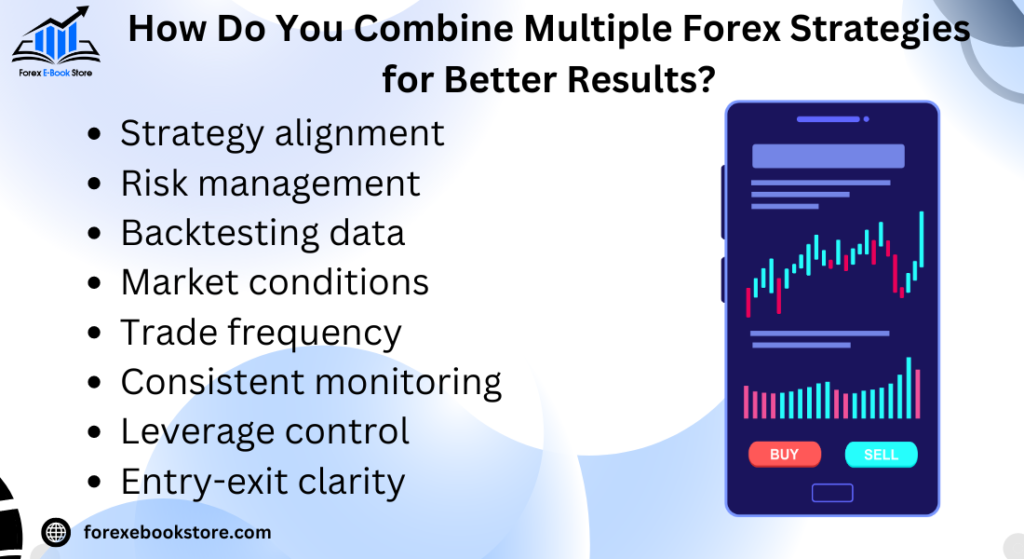Developing a Forex trading strategy is one of the most important steps for anyone looking to achieve consistent success in the foreign exchange market. A well-crafted strategy helps traders navigate the complexities of currency price movements, offering a structured approach to decision-making. Without a proper strategy, Forex trading can become a series of emotional reactions, rather than a calculated method for making profits.
When you begin developing a Forex trading strategy, it’s essential to consider factors such as your risk tolerance, preferred trading style, and time commitment. Whether you’re interested in day trading, swing trading, or long-term investing, a strategy tailored to your needs will improve your chances of success. By using technical and fundamental analysis, and incorporating risk management practices, you can create a strategy that is both adaptable and effective in the ever-changing Forex market.
Table of Contents
What is a Forex Trading Strategy?
A Forex trading strategy is a systematic plan designed to help traders make informed decisions on when to buy or sell currency pairs. It is based on a set of rules or criteria that are developed using technical indicators, market analysis, or specific trading goals. The main purpose of a trading strategy is to remove emotional decision-making from the trading process, allowing for consistent and disciplined trading.
Traders develop strategies based on their individual risk tolerance, time commitment, and preferred analysis methods (technical or fundamental). Common strategies include scalping, day trading, and swing trading, each tailored to different trading environments and market conditions. A well-structured strategy also includes clear entry and exit points, risk management rules, and performance evaluation metrics.
Essential Elements of a Forex Trading Strategy:
- Entry and exit rules: Defined criteria for when to buy or sell.
- Risk management: Strategies to limit losses, such as stop-loss orders.
- Market analysis: Using technical or fundamental analysis to inform trades.
How Do You Create a Winning Forex Trading Plan?
Creating a winning Forex trading plan requires a structured approach that combines analysis, discipline, and risk management. The first step is to clearly define your trading goals. Are you aiming for short-term gains or long-term profits? Once you have set your goals, you need to choose the right trading style that suits your objectives, whether it’s scalping, day trading, or position trading.
A successful trading plan should also include strict risk management rules. For example, you can decide to risk no more than 2% of your account on a single trade. Along with this, your plan should outline your preferred technical indicators, timeframes, and how you’ll incorporate fundamental analysis for broader market understanding. It’s important to continuously evaluate and adjust your plan based on market conditions and trading performance.
Key Steps to Creating a Forex Trading Plan:
- Define your goals: Short-term vs. long-term objectives.
- Choose your trading style: Day trading, swing trading, or position trading.
- Set risk management rules: Limit your losses with stop-losses and position sizing.
What Are the Most Popular Forex Trading Strategies?
There are several widely-used Forex trading strategies that cater to different risk appetites and time commitments. Each strategy has its own strengths and weaknesses, and it’s crucial to choose one that aligns with your trading style and goals.
- Scalping: This is a high-frequency strategy where traders make multiple small trades throughout the day, aiming to capitalize on minor price movements. It requires intense focus and quick decision-making, making it ideal for those who can dedicate time to monitoring the market constantly.
- Day Trading: Day traders open and close their positions within the same trading day to avoid overnight risks. They rely heavily on technical analysis and often trade during the most volatile hours of the market. This strategy is suitable for traders who prefer short-term gains and can commit to full-time trading.
- Swing Trading: Swing traders hold positions for several days or even weeks, aiming to profit from larger market movements. This strategy combines both technical and fundamental analysis and is better suited for traders who cannot monitor the market throughout the day but are willing to wait for significant trends.
Popular Forex Trading Strategies:
- Scalping: Quick trades, small profits.
- Day Trading: Intra-day trades, avoiding overnight risks.
- Swing Trading: Holding positions for days or weeks to capture larger trends.
How Do You Choose the Best Timeframe for Your Forex Strategy?
Choosing the right timeframe is a crucial part of developing a successful Forex trading strategy. The timeframe you choose depends largely on your trading style, goals, and the amount of time you can dedicate to monitoring the markets. For example, short-term traders like scalpers often use minute charts (1-minute, 5-minute) to catch small price movements, while swing traders prefer daily or weekly charts to identify larger trends.

- Scalping Timeframes: Traders who use scalping strategies typically focus on very short timeframes, such as 1-minute or 5-minute charts. These timeframes allow traders to make quick trades and take advantage of small price fluctuations. Scalping requires close monitoring of the market and quick decision-making.
- Day Trading Timeframes: Day traders typically use 15-minute or 1-hour charts. These timeframes provide enough data to analyze trends over the course of the day without being as fast-paced as scalping. Day traders aim to open and close positions within the same day, avoiding overnight risk.
- Swing Trading Timeframes: Swing traders look for opportunities on 4-hour, daily, or even weekly charts. These timeframes allow traders to capture larger price movements and hold positions for days or weeks. Swing trading is ideal for those who cannot monitor the market constantly but still want to take advantage of market trends.
How to Select the Right Timeframe:
- Scalpers: Use 1-minute or 5-minute charts for quick trades.
- Day traders: Focus on 15-minute to 1-hour charts to find intra-day opportunities.
- Swing traders: Use daily or weekly charts for long-term market trends.
What Technical Indicators Should You Use in Forex Trading?
Technical indicators are essential tools for analyzing market trends and price movements in Forex trading. These indicators help traders identify potential entry and exit points, as well as the strength of a trend. When developing a Forex trading strategy, it’s important to choose the right technical indicators that align with your trading style and timeframe.
- Moving Averages (MA): A common indicator that smooths out price data to identify the overall direction of a trend. The Simple Moving Average (SMA) and Exponential Moving Average (EMA) are popular choices. MAs help traders spot potential buy or sell signals when prices cross above or below the moving average.
- Relative Strength Index (RSI): The RSI is a momentum indicator that measures whether a currency pair is overbought or oversold. When the RSI value is above 70, the currency is considered overbought, and when it is below 30, it is considered oversold, signaling potential reversal points.
- Bollinger Bands: This indicator measures market volatility and helps traders identify potential breakouts. The bands expand during periods of high volatility and contract during low volatility, giving traders clues on whether to expect price movements.
Most Commonly Used Technical Indicators:
- Moving Averages (MA): Helps in identifying trends and possible reversals.
- Relative Strength Index (RSI): Measures overbought and oversold conditions.
- Bollinger Bands: Indicates volatility and potential breakout points.
How Do You Integrate Risk Management into Your Forex Strategy?
Risk management is a critical component of any successful Forex trading strategy. Without proper risk management, even the most well-developed strategy can lead to significant losses. The key to risk management is protecting your capital by limiting potential losses on each trade and ensuring that you don’t take on more risk than you can afford.
- Position Sizing: One of the most important risk management techniques is controlling the size of your positions. A general rule is to risk no more than 1-2% of your trading capital on any single trade. This ensures that you can survive a string of losing trades without depleting your account.
- Stop-Loss Orders: A stop-loss order is a tool that automatically closes your trade once the market reaches a certain price, limiting your losses. By placing stop-losses at key support or resistance levels, traders can protect their positions and avoid catastrophic losses.
- Risk-Reward Ratio: A favorable risk-reward ratio ensures that the potential reward on a trade is worth the risk taken. Many traders aim for a ratio of 1:2, meaning that for every $1 risked, they aim to make $2. This approach helps to offset losses by ensuring that winning trades outweigh losing ones.
Key Risk Management Techniques:
- Position Sizing: Limit risk to 1-2% of total capital per trade.
- Stop-Loss Orders: Automatically close trades to limit losses.
- Risk-Reward Ratio: Aim for a 1:2 risk-reward ratio to ensure profitability over time.
What Role Does Fundamental Analysis Play in Forex Strategies?
Fundamental analysis in Forex trading focuses on evaluating a country’s economic strength and geopolitical environment to predict future currency movements. Unlike technical analysis, which uses price charts and historical data, fundamental analysis looks at economic indicators, political events, and central bank policies to assess the long-term value of a currency.
- Economic Indicators: Fundamental analysis relies on data such as GDP growth, interest rates, inflation, and employment reports to gauge a country’s economic health. For example, higher interest rates generally attract foreign capital, increasing demand for the local currency, which leads to an appreciation of the currency’s value.
- Geopolitical Events: Political stability and global events such as elections, trade agreements, or conflicts can have a significant impact on currency prices. For instance, uncertainty in the Eurozone due to elections or Brexit has caused fluctuations in the EUR/USD pair.
How to Use Fundamental Analysis in Forex:
- Monitor economic indicators like GDP, interest rates, and inflation to assess the overall market.
- Stay updated on political and global events that may cause volatility in currency markets.
How Can You Backtest Your Forex Trading Strategy?
Backtesting is an essential process that involves testing a Forex trading strategy on historical data to evaluate its effectiveness before risking real capital. Backtesting allows traders to see how a strategy would have performed under different market conditions, helping to refine and improve the strategy.

- Choosing the Right Software: Traders use backtesting software or trading platforms like MetaTrader 4 (MT4) or TradingView to simulate trades based on past data. These tools allow you to run your strategy over historical price movements to evaluate its performance.
- Evaluating Performance Metrics: Key metrics to evaluate during backtesting include the win-loss ratio, maximum drawdown, and profit factor. These metrics help determine if the strategy can generate consistent profits and manage risks effectively over time.
Steps for Backtesting a Forex Strategy:
- Select historical data: Choose a relevant timeframe and currency pair for testing.
- Run the strategy: Use backtesting software to simulate trades based on your rules.
- Evaluate results: Analyze key metrics like win rate, drawdown, and profitability.
What Are Common Mistakes When Developing a Forex Strategy?
Even experienced traders can make mistakes when developing a Forex trading strategy. Understanding these common pitfalls can help you avoid costly errors and create a more effective trading plan.
- Overcomplicating the Strategy: One of the most common mistakes is creating an overly complex strategy with too many indicators and rules. While technical indicators can help, using too many can lead to analysis paralysis, making it harder to make clear decisions. Simplicity is often more effective, allowing traders to focus on the most important signals.
- Ignoring Risk Management: Another mistake is neglecting proper risk management. Even the best strategy will fail if risk management is not in place. Traders who don’t use stop-loss orders or who over-leverage their positions risk significant losses, especially in volatile markets.
Common Mistakes to Avoid:
- Overcomplicating strategies: Keep it simple with a few key indicators.
- Neglecting risk management: Always use stop-losses and limit risk exposure.
- Lack of discipline: Failing to stick to a strategy during emotional market swings can lead to inconsistent results.
How Do You Adapt Your Forex Trading Strategy to Changing Market Conditions?
Forex markets are dynamic, with conditions that can change rapidly due to various factors such as economic news, geopolitical events, or shifts in market sentiment. Adapting your Forex trading strategy to these changes is essential for maintaining profitability. Flexibility and a proactive approach allow traders to adjust their strategies based on current market behavior.
- Trend vs. Range-Bound Markets: Markets can either be trending or range-bound, and the strategy that works in one market condition may fail in the other. For instance, in a trending market, strategies like trend-following and moving averages work well, while oscillators and support/resistance levels are more effective in a range-bound market. Traders must recognize these shifts and adjust their strategies accordingly.
- Economic Events and Volatility: Major economic announcements, such as interest rate decisions or employment reports, can cause significant volatility in the Forex market. Traders can adapt by temporarily widening their stop-losses or switching to shorter timeframes during high volatility periods. Keeping an eye on the economic calendar allows traders to anticipate market movements and adjust their strategy in advance.
Tips for Adapting Your Forex Strategy:
- Identify market conditions: Adjust your strategy for trending vs. range-bound markets.
- Monitor economic events: Adapt to increased volatility during major announcements.
- Remain flexible: Be prepared to adjust stop-losses and timeframes as conditions change.
What Tools Can Help in Building a Forex Trading Strategy?
Developing a Forex trading strategy requires the use of various tools that aid in market analysis, trade execution, and performance tracking. The right tools can make the difference between a well-informed decision and a missed opportunity.
- Trading Platforms: Platforms like MetaTrader 4 (MT4) and MetaTrader 5 (MT5) are popular among traders for their comprehensive tools, including live charts, technical indicators, and automated trading options. These platforms provide traders with real-time data, customizable charts, and support for multiple trading strategies, from scalping to swing trading.
- Economic Calendars: A reliable economic calendar is essential for tracking major economic events that may affect market volatility, such as interest rate decisions, GDP reports, and employment data. Platforms like Forex Factory or Investing.com provide real-time updates on economic news that traders can use to adjust their strategies.
- Backtesting Software: Tools like TradingView and MetaTrader’s Strategy Tester allow traders to backtest their strategies on historical data. This helps traders evaluate how their strategy would have performed under different market conditions, enabling them to fine-tune their approach before applying it to live trading.
Essential Tools for Strategy Development:
- MetaTrader 4/5: Comprehensive trading platforms with technical analysis tools.
- Economic calendars: Stay updated on market-moving events.
- Backtesting tools: Test your strategy using historical data to ensure its effectiveness.
How Do You Combine Multiple Forex Strategies for Better Results?
Combining multiple Forex strategies can offer traders more flexibility and better risk management by diversifying their approaches to the market. Instead of relying on a single strategy, traders can implement a mix of short-term and long-term strategies that complement each other.

- Diversifying Strategy Types: By blending strategies like scalping for short-term gains and swing trading for longer-term trends, traders can reduce their dependency on one market condition. Scalping provides frequent trading opportunities in volatile markets, while swing trading captures larger moves over extended periods.
- Hedging Strategies: Combining strategies can also be used as a form of hedging. For example, while executing a long-term position trade, traders can use shorter-term strategies, like day trading, to capture profits during market fluctuations. This allows traders to protect themselves from potential losses in one strategy by gaining in another.
Benefits of Combining Strategies:
- Diversification: Reduces risk by not relying on one strategy or market condition.
- Hedging opportunities: Use short-term strategies to complement long-term positions.
- Increased flexibility: Allows traders to adapt to different market conditions without altering their entire approach.
How Do You Maintain Consistency in Your Forex Trading Strategy?
Maintaining consistency is a key element in Forex trading and can be the difference between long-term success and failure. Sticking to your predefined strategy, rather than making impulsive decisions based on emotions, helps to reduce errors and keep trading performance steady.
- Sticking to Your Trading Plan: One of the best ways to maintain consistency is by having a well-defined trading plan that includes clear rules for entry, exit, and risk management. Traders who deviate from their plans based on emotional reactions or market noise tend to make inconsistent decisions, leading to poor outcomes. Consistency comes from executing trades based on logic, not emotion.
- Tracking and Reviewing Performance: Keeping a trading journal where you document your trades, the reasoning behind them, and the outcomes can help you maintain consistency. Regularly reviewing your performance allows you to identify patterns in your trading behavior and make improvements over time.
Tips for Maintaining Consistency:
- Follow your trading plan: Avoid emotional decision-making.
- Keep a trading journal: Review your performance regularly to refine your strategy.
- Stay disciplined: Consistency in execution leads to long-term profitability.
What Are the Key Metrics to Measure the Success of a Forex Strategy?
To evaluate the effectiveness of a Forex trading strategy, it’s important to track specific performance metrics. These metrics provide insights into how well the strategy is performing and whether it needs adjustments.
- Win Rate: The win rate is the percentage of successful trades out of the total number of trades. A win rate of over 50% is generally considered good, but it should be analyzed in conjunction with other metrics, such as risk-reward ratio.
- Risk-Reward Ratio: This metric compares the potential profit of a trade to its potential loss. A strategy with a 1:2 risk-reward ratio means that for every $1 risked, the potential reward is $2. A good risk-reward ratio ensures that even with a lower win rate, the strategy can still be profitable.
- Drawdown: Drawdown measures the largest drop in account equity from peak to trough over a specific period. A high drawdown indicates that the strategy has periods of significant losses, which can affect the trader’s overall capital.
Important Metrics for Evaluating a Strategy:
- Win rate: Measures the percentage of profitable trades.
- Risk-reward ratio: Determines the balance between risk and potential reward.
- Drawdown: Tracks the maximum decrease in account equity during losing periods.
How Often Should You Review and Adjust Your Forex Strategy?
Even a well-developed Forex trading strategy needs regular reviews and adjustments to stay effective in changing market conditions. Markets evolve due to shifts in economic policy, geopolitical events, and changes in liquidity. By regularly evaluating your strategy, you can make necessary adjustments to stay aligned with market trends.
- Regular Performance Reviews: Traders should periodically review their strategy, typically on a monthly or quarterly basis, depending on the frequency of trades. This review includes analyzing key metrics like win rate, risk-reward ratio, and overall profitability. If performance has declined, it’s crucial to determine whether this is due to market conditions or a flaw in the strategy itself.
- Adjusting for Market Conditions: Forex markets can change rapidly, particularly during times of economic or political uncertainty. Adjusting your strategy to align with these shifts is important. For instance, you may need to switch from a trend-following strategy to a range-bound strategy when markets are consolidating, or widen your stop-loss levels during periods of high volatility.
When and How to Adjust Your Forex Strategy:
- Regular reviews: Analyze performance metrics monthly or quarterly.
- Adapt to market conditions: Modify your strategy to match trending, range-bound, or volatile markets.
- Stay flexible: Be prepared to make small adjustments based on performance or market changes.
Conclusion
In conclusion, developing a Forex trading strategy is essential for achieving consistent success in the foreign exchange market. A well-structured strategy, incorporating risk management, technical and fundamental analysis, and performance tracking, allows traders to navigate the complexities of the market with confidence. By continuously reviewing and adjusting your strategy to align with changing market conditions, you can enhance its effectiveness over time.
Before diving into strategy development, it’s crucial to have a solid foundation, which begins with an introduction to Forex trading. Understanding the basics of how the Forex market operates, the major players involved, and key trading concepts sets the stage for creating a successful strategy. Combining both foundational knowledge and a carefully developed strategy will improve your Trading Strategy performance and long-term profitability.












